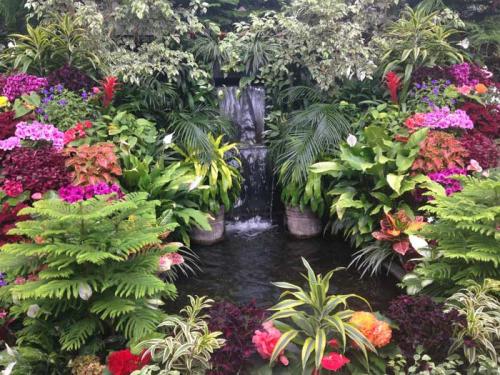|
Recent Entries to this Blog
Photinia Red Robin characteristics and most important care
Posted: 29 May 2023 Posted: 03 May 2023 Posted: 22 Apr 2023 Posted: 11 Apr 2023 Posted: 01 Apr 2023 All Entries |
How to correctly select plants for my gardenCreating a beautiful and healthy garden involves selecting the right plants for your space. With so many options available, it can be overwhelming to decide which plants to include in your garden. Here are seven key steps to help you select the plants that will thrive in your garden and promote biodiversity. 
Garden plants - Get this image on: PxHere ( photo / image / picture from AlbertoL's Garden ) 1. Evaluate your garden space Before selecting plants, it is important to evaluate your garden space. Consider the amount of sunlight, water, and type of soil. Determine which areas get the most and least sun and where there may be drainage problems. It is also important to consider the size of your yard. If your space is small, you may want to choose more compact plants. If you have a larger space, you can select larger, sprawling plants. Take the time to measure your garden space and make sure you select plants that will fit properly. 2. Determine your garden goals Decide what you want to achieve with your garden. Want to attract pollinators, create a vegetable garden, or showcase a particular style? Knowing your goals will help you select plants that align with your vision. It is also important to consider the climate in your area and select plants that are suitable for the local climate. Some plants may be more resistant to drought, while others may require more water. Be sure to select plants that are suitable for the climate in your area. 3. Research the types of plants Research the different types of plants that are suitable for your garden space and goals. Consider the plant's size, growth rate, and maintenance requirements. It is also important to consider the seasonality of the plants and select a mix of plants that flower at different times of the year. Investigate the Araucaria an interesting and unique plant that can add a touch of elegance to any garden. The Araucaria is a genus of trees and shrubs commonly found in the southern hemisphere. It is a slow growing plant that can reach up to 80 feet in height. 4. Evaluation of seasonal change When selecting plants for your garden, it's important to consider how different seasons of the year may affect them. Some plants can thrive in the spring and summer, while others can better tolerate cold winter conditions. Therefore, it is important to consider the climate and the hardiness zone of the plants you are selecting. If you live in an area with different seasons, consider plants that bloom in the spring, summer, fall, and winter. Select plants that flower in different seasons of the year to keep your garden looking attractive at all times of the year. Also, consider the color and texture of the plants' leaves, as some may lose their foliage in winter while others maintain their foliage year-round. If you live in a hot climate, you can select plants that are drought resistant and can withstand high temperatures. If you live in a cold climate, it is important to select plants that can withstand frost and snowfall. You may also want to consider plants that are native to your area, as they are often more resilient to local weather conditions. 5. Consider biodiversity Promoting biodiversity in your garden is important for a healthy ecosystem. Choose a variety of plants, including native species, to provide food and shelter for different animals and insects. Native plants are also more resistant to diseases and pests. Also, incorporating different textures, colors, and heights will create visual interest in your garden. Flowering plants can attract pollinators, while plants with dense foliage can provide shelter for small animals. 6. Consider plant interaction It is important to consider how different plants interact with each other. Some plants can compete for water and nutrients, while others can complement each other. Consider how different plants may interact and select plants that benefit each other. It is also important to consider how plants affect the animals and insects in your garden. Some plants may be toxic to certain animals, while others may attract certain insects that may be beneficial to your garden. 7. Select healthy plants When selecting plants, be sure to choose plants that are healthy and free from diseases and pests. Inspect plants in the nursery for yellowing leaves, spots, or signs of pest damage. It's also important to choose plants that are appropriate for the size of your container or pot. In short, selecting the right plants for your garden is key to creating a healthy and beautiful space. Evaluate your garden space, determine your goals, research plant types, promote biodiversity, assess seasonal changes, consider plant interaction, and select healthy plants. By following these seven steps, you can create a garden that flourishes and promotes biodiversity in your community. This blog entry has been viewed 284 times
You're reading one of many blogs on GardenStew.com.
Register for free and start your own blog today. Login or register to leave a comment. |
|
